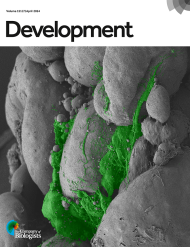Pin1-promoted SUMOylation of RNF168 restrains its chromatin accumulation
Selected by
Pierre Caron
The molecular architecture of cell cycle arrest
Selected by
Anastasia Moraiti
A motor-based approach to induce chromosome-specific mis-segregations in human cells
AND
Inducing Specific Chromosome Mis-Segregation in Human Cells
Selected by
Jana Helsen, Dey Lab
Telomere-to-telomere human DNA replication timing profiles
Selected by
Jennifer Ann Black
Blockage of Lamin-A/C loss diminishes the pro-inflammatory macrophage response
Selected by
Roberto Amadio
Absolute Scaling of Single-Cell Transcriptomes Reveals Pervasive Hypertranscription in Adult Stem and Progenitor Cells
Selected by
Vanessa Luzak
ATM-dependent formation of a novel chromatin compartment regulates the Response to DNA Double Strand Breaks and the biogenesis of translocations
Selected by
Jennifer Ann Black
Angiocrine IGFBP3 Spatially Coordinates IGF Signaling During Neonatal Cardiac Regeneration
Selected by
Laura Alonso-Herranz
Drag-and-drop genome insertion without DNA cleavage with CRISPR-directed integrases
Selected by
Louise Moyle et al.
piRNAs regulate a Hedgehog germline-to-soma pro-aging signal
Selected by
Chee Kiang Ewe
TEMPO: A system to sequentially label and genetically manipulate vertebrate cell lineages
Selected by
Julia Grzymkowski
Saturation variant interpretation using CRISPR prime editing
Selected by
Jeffrey Calhoun










